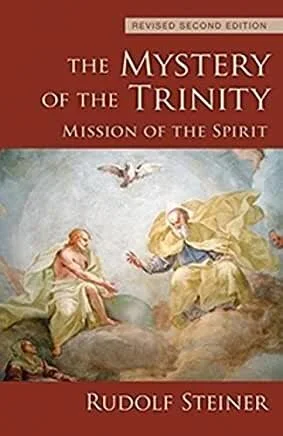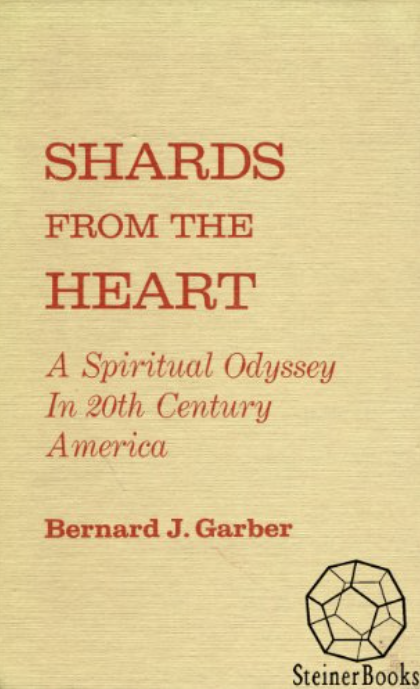The Four Gospels
The Four Gospels
DIGITAL BOOK - click here for printed edition
“When a theologian speaks of the widespread misconception nowadays, that faith is an intellectual holding of what-is-possible, they underpin a wretched reduction of faith. Since the interest of New Testament studies shifted to philosophical details, the word of the Bible was treated intellectually, thus shaking the foundation of faith in many people.” — Christoph Rau
Could a deeper cause of today’s myriad human troubles be related to a dwindling or even nonexistent familiarity with the four New Testament Gospels of Matthew, Mark, Luke, and John? This is the view of Christoph Rau, for whom today’s prevailing approach to theological research—which treats the ancient religious texts more as literary products than authentic records of spiritual experience—is, if anything, a contributing factor in our modern alienation from the spirit.
In this book, Rau presents the results of five decades of research, demonstrating the independent structure of each of the four canonical Gospels. Through clear analyses, he illumines the distinctive stylistic features of each composition, revealing the design principles through which the meaning and goal of each Gospel can be understood.
Beyond the intrinsic value of each Gospel, the author draws on their special features to explain how the spiritual richness of the four written works is fully revealed only by considering the pre-Christian religions, because each of the evangelists describes the incarnation of the Son of God from the perspective of his own mystery religion. Furthermore, the author succeeds in showing that the Gospels, despite their seeming contradictions, are elements of a common organism.
This book is a translation from German of Die Vier um den Einen: Wesensart und spiritueller Hintergrund der Evangelien (Verlag Dr. Dieter Winkler, 2008).
Table of Contents
Preface
1. The True Origin
— The Initial Situation
— Structure as the Key to Meaning
— Cosmic Quaternity: The Elements and the Four Ethers
— The Four Elements in the Gospels
— Symbols of the Evangelists in Art
— Rivers of Paradise and Prophets
— The Evangelists’ Roots in the Pre-Christian Mystery Religions
2. The Sign of Jonah: The Fulfillment of
Ancient Expectations for the Messiah in Matthew’s Gospel
— Matthew’s Prologue
— The First Main Part
— The Second Main Part
— The Story of the Passion and the Great Sign
— The Dynamic Tension between Becoming and Fulfilling
— Persian Background: Dualism with Zarathustra and with Matthew
— Iranian-Essene Longing for Redemption in the Name “Matthew”
— Conclusion
— Overview: The Clear Structure between the Beginning and Ending Sentences
3. Salted with Fire: The Path of Mark’s Gospel to Resurrection through the Spirit
— Mark’s Unique Manner and His Important Expressive Means
— The Pillars of the Text: Beginning, Middle, and End
— The Plan of the Eight New Beginnings
— The Eight Stages and Their Arena
— The Egyptian Background: The Grief of Isis and the Reawakening of Osiris
— The Martyrdom of the Evangelist and His Unfinished Work
— Overview: The Path of Jesus as Symbol of His Mission
4. The Path of Redemption:
Realization of the Eightfold Path in Luke’s Gospel
— Buddha’s Influence in the West
— How Buddha’s Teaching Came to the World: Stations in the Life of Buddha and of Jesus
— Buddha’s Teaching of Suffering and Its Transformation through Jesus
— The Eightfold Path in Luke’s Gospel
— Stages 1 to 3 of the Path: Right Understanding,
— Right Judgment, Right Speech (Word)
— Stages 4–6: Right Deed, Right Conduct, Right Striving
— The Sequence of Meals in Their Context: Directions for Life
— Self-Redemption and Grace: The Eightfold Path as Humanity’s Possession for Life
— Postscript
— Overview: The Ministry of Christ in the Sense of the Eightfold Path
5. The Ultimate Purpose of World History:
The Divine Logos in Its Revelation of Love in John’s Gospel
— The Johannine Primordial Word in the Prologue: The Logos and the Light
— The Logos in Greek Philosophy
— The Uniform Conception
— The Two Main Parts as a Unified Whole
— The First Main Part: Revelation of the Light
— The Second Main Part: The Becoming of Love
— The Hour of Fulfillment
— Scorpion and Eagle: The Move from the Lap to the Heart
— The Sum of the Whole: 153 Large Fish
— Overview: The Main Motifs Weaving throughout the Whole Work
6. The Unity of the Four Gospels: Not More and Not Less Than Four:
Creation of the Canon of the Four Gospels
— The Synoptic Hypothesis and the Fourfold Language of the Evangelists
— The Fourfold Picture of Jesus in the Gospels
— The Son of Man
— Complementary Accounts: The Seven Words from the Cross
— Seven Special Sabbath Deeds
— The Eighth Sabbath Healing and the Meaning of Eight
— Conclusion
Select Bibliography
Figures
Need help? Click here for eBook FAQs.





